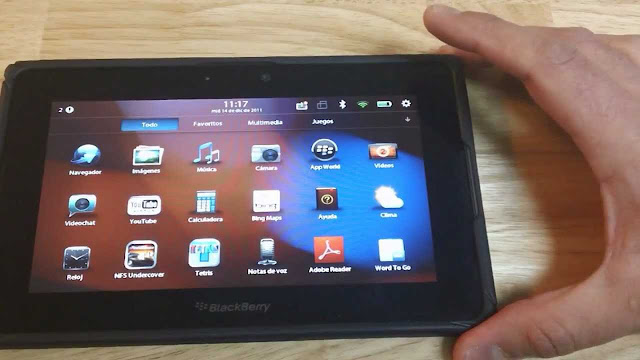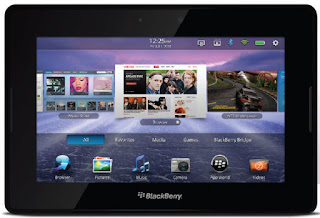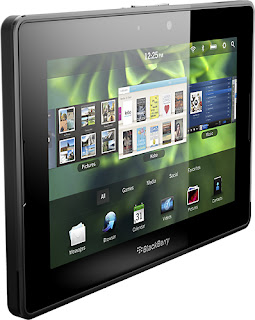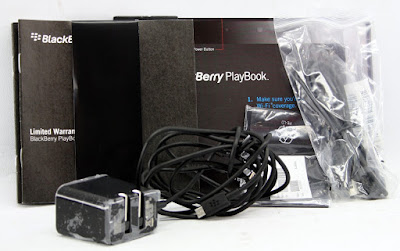Motorola's Xoom tablet was originally released in February 2011 as the first tablet to run Google's tablet-optimized Android 3.0 software. Since that time, it has undergone numerous software updates, as well as a 4G hardware update.
Nonetheless, we have lowered the Xoom's rating to reflect the changes in the increasingly competitive tablet market. The body of this review, however, has not been changed since its original publish date and should not be relied on as an accurate representation of today's Motorola Xoom experience.
The Xoom can now be upgraded to Android 4.0 (Ice Cream Sandwich). Check the Ice Cream Sandwich section of the Asus Transformer Prime review for details on the changes ICS brings. For our most up-to-date ranking of top tablets, visit CNET's Best 5 tablets page.
The Motorola Xoom tablet is easily the best competition Apple's iPad has ever seen. Sporting a 10.1-inch screen, front and rear cameras, HDMI output, a dual-core processor, and Google's tablet-optimized version of Android, the Xoom is entering the tablet wars with guns blazing.
Priced at $800 off-contract or $600 with a two-year commitment from Verizon, the Xoom isn't out to win frugal customers. Instead, Motorola is taking the approach used with its successful line of Droid smartphones: emphasizing the device's horsepower and the many capabilities not found on its Apple counterpart.
To this end, the Xoom's spec sheet is an all-star cast of dual-core processors, multimegapixel cameras, expansion slots, and maxed-out RAM. Combine the hardware with Motorola's exclusive access to Google's long-awaited Android Honeycomb operating system, and you have one of the most talked-about tablets of 2011.
Does the reality of the
Xoom match up with the hype? Let's dive in and see what's working and what could be better.
Design and hardware features
With a 10.1-inch screen, you'd think Xoom would feel larger than the 9.8-inch screen-wielding iPad, but it actually comes off as slightly smaller. As tablets go, the Xoom carries its weight in its hips, stretching its screen area out to a more wide-screen-worthy 1,280x800-pixel WXGA aspect ratio.
This wider screen, coupled with the landscape-oriented positioning of the Motorola and Verizon logos, makes the
Xoom a natural fit for use in a landscape view. This is fundamentally different from the original iPad, which prescribes a portrait orientation with its placement of the Home button.
Of course, either device will reorient its apps and home screens for however you prefer to hold it, but nonetheless, the Xoom is ostensibly made for landscape view, whereas the iPad's design is naturally geared for portrait.
Motorola also slims the total device size down by running a 0.5-inch bezel around the screen, instead of the 0.75-inch bezel on the iPad. It's a small yet meaningful difference in a number of ways.
The bad news is that the slimmer bezel offers less area for your thumbs to grip the screen, making it less comfortable to hold with one hand. And although the Xoom is only a tenth of a pound heavier than the original iPad, the smaller bezel and wider form of the Xoom make it noticeably heavier to hold in one hand.
On the upside, when holding the
Xoom in portrait, the thin bezel makes it easy to get your thumbs over the screen, making thumb-typing much less awkward than on the iPad.
The Xoom's keyboard, in general, deserves a round of applause. With its ample size and well-spaced virtual keys, typing performance is excellent in both landscape and portrait orientations.
The keyboard supports multitouch for speedy typing, dedicated tab and emoticon keys, and a dedicated button to quickly jump you into keyboard settings. The keys are slightly smaller and more rectangular than the iPad's, but the overall performance is both swift and accurate.
On the bottom of the Xoom you'll find connections for Micro-USB, Micro-HDMI, a socket for the included power adapter, and a pinhole microphone. Don't let the HDMI port fool you, though. In order for us to get video out from the Xoom, we first had to dock it in Motorola's $129 HD speaker dock. Once we did, though, the entire Honeycomb experience was mirrored on our TV, allowing apps like YouTube and Maps some room to show off.
Up on the top edge you'll find a standard headphone jack packed conspicuously in the middle and a removable door to its left that conceals the microSD expansion port and a place for a 4G SIM card, both of which were disabled at launch.
Motorola is promising microSD card support (up to 32GB) shortly after the product launch, enabled by an over-the-air update. Support for Verizon's 4G network is also forthcoming, though later in 2011, and not without submitting your Xoom to an authorized dealer for a hardware update.
Finally, there's the back of the
Xoom, which includes a 5-megapixel camera and dual-LED flash, a stereo pair of speakers, and a sleep/wake button. Again, the layout of all these features somewhat dictates that you hold the device in landscape view, less you risk obscuring the camera with your hand.
Camera quality is about what we'd expect from any high-end smartphone: good, but not point-and-shoot quality, and easily ruined by fingerprints on the lens. Video quality is also good, recording up to 720p. In spite of its capabilities, the Xoom makes for a comically large camera or camcorder by today's standards.
We felt a bit silly snapping photos in public, holding the
Xoom up in the air like Moses on the mountain. Still, it's a great capability to have, and one which Apple has received considerable flack for leaving off the original iPad.
A front-facing 2-megapixel camera is also included on the Xoom, geared for video chat. We tested the camera using the included Google Talk app, and it worked without a hitch over both Wi-Fi and Verizon's 3G data connection.
The Xoom has plenty of features under the hood, as well. For horsepower, you have a 1GHz dual-core processor with 1GB of RAM at its disposal. You really notice it, too.
System performance purrs along, even with multiple browser tabs open, Pandora playing in the background, and e-mail notifications popping up.
Other features of the
Xoom are par for the course these days.
There's Bluetooth 2.1 support for audio and peripheral support (including Bluetooth keyboards). The Wi-Fi antenna supports bands up to 802.11n. Embedded sensors for screen brightness, accelerometer, and gyroscope are all onboard. There's even a barometer sensor inside, though no apps yet to support it.
Motorola With Wi-Fi review:
Honeycomb
Up until now, every Android tablet we've reviewed suffered from behaving too much like a smartphone. Google's mobile operating system, its apps, and its developer tools were all geared for the small screen, and it showed.
With the introduction of Android 3.0 (aka Honeycomb), Google is showing its commitment to tablets. With the exception of legacy support of existing Android apps, Honeycomb is a dramatic departure from the Android of smartphones.
Even experienced Android users will need some time to get accustomed to Honeycomb's navigation. Gone is the familiar four-button navigation across the bottom of the screen. Contextual menus and options are accessed through the top of the screen, notifications pop out from the lower right, and the trusty old back arrow will occasionally morph into a down arrow when the keyboard is engaged, allowing you to conceal or reveal the keyboard.
Out of the gate, the first thing we noticed about Honeycomb compared with iOS is the amount of information conveyed on the home screen. Through the use of widgets, you can glance your inbox, Twitter stream, Facebook news, and YouTube channels, all in one view.
The whole metaphor feels more like a deck of cards on a playing table than the grid of apps we're accustomed to in iOS or an Android phone app drawer. It's not quite the clumsy mess of a conventional desktop, but not as rigid and size-constrained as a mobile OS. It's a thoughtful compromise.
That said, Honeycomb's added complexity and sophistication is a double-edged sword. To Google's credit, Android 3.0 in many ways pushes tablets in an exciting new direction by blurring the line between a mobile OS and a conventional desktop.
But as much as iOS gets push back from users who find it insultingly simple, Android Honeycomb is at times needlessly secretive. A task as simple as opening the lock screen plays out like an IQ puzzle. Home screen customization is broken down into separate categories for widgets, app shortcuts, and app-specific shortcuts, such as browser bookmarks and Gmail labels.
There will be users who are going to rejoice in the flexibility and options on offer by Honeycomb, but there are bound to be just as many who are turned off by the complexity. We're just thankful that users now have more options when it comes to tablets.
Specifically optimized for devices with larger screen sizes such as tablets, the Android 3.0 platform (dubbed Honeycomb) introduces a brand new, truly virtual and "holographic" UI design. With five customizable home screens, you can easily access your favorite live widgets or application shortcuts. Each screen features a familiar launcher to access to all installed applications, as well as a Search box for universal search of apps, contacts, media files, web content, and more.
Multitasking in Android 3.0 is easier than ever, and you can use the Recent Apps list in the System Bar to see the tasks underway and quickly jump from one application context to another. You'll even see a snapshot of the last screen viewed in that app as a visual reminder. The Android onscreen keyboard has also been redesigned to make entering text fast and accurate on larger screen sizes.
Performance
As we've already noted, the
Xoom is smoking fast. We're also happy to report that the screen quality is excellent. We couldn't find a bad viewing angle in any direction, and the 150 ppi pixel density is smooth for both images and text. That said, the screen doesn't get as bright as the iPad's, which becomes an issue if you're trying to view the screen outdoors.
Motorola pegs the Xoom's battery life at 10 hours of video playback--same as the original iPad. Of course it doesn't hurt that the Xoom does not yet support Adobe Flash, a feature that has been maligned as a battery killer by Apple and others.
Motorola promises that Adobe Flash support is coming soon via an over-the-air-update, and is working with Adobe to optimize Flash for the Xoom's Tegra 2 processor. Until then, if Flash compatibility is a must-have feature, your best course of action is to wait (or buy a Netbook, possibly for less).
Why the iPad isn't dead
The Motorola
Xoom offers many features that the iPad can't match, but there's still some catching up to be done from Motorola and Google .
For starters: apps. The depth and breadth of apps available for iOS are unmatched by any other mobile OS. More importantly, since the debut of the iPad in April 2010, Apple has amassed more than 60,000 apps designed specifically for use on a tablet. Outside of games (which are easily scaled), the Xoom has only a fraction of tablet-specific content.
And then there's iTunes. With the Xoom's HD-worthy screen, it's a shame there's no easy way to rent or download movie and TV content. Sure, you can boot up YouTube or install any number of third-party apps to acquire video content, but there's still no beating the iPad when it comes to finding and downloading music, movie, TV, and podcast content right out of the box, or syncing it from your computer.
We've detailed more reasons the iPad still holds its own against competing tablets in a separate blog post. For the Xoom, perhaps the most damning thing we can say is that in spite of its insanely impressive spec sheet (and high price), the device seemingly offers no practical speed advantage over the iPad. For everyday tasks, such as video playback, gaming, browsing, and e-mail, the
Xoom and the first-gen iPad behave just about the same.
Final thoughts
For all our criticisms, we are thrilled that Motorola, Google, and Verizon have teamed up to deliver the Xoom. It is the best alternative to the iPad we've seen, and there's every reason to believe it will get better over time with the addition of Adobe Flash support, 4G network compatibility, and refinements from Google.
At its current price, we think the Xoom's appeal will be limited to early adopters and Android loyalists. As prices inevitably come down (or contracts become more lenient), the Xoom will likely realize its true potential.
The
Motorola XOOM weighs 25 ounces and measures 9.8 x 6.6 x 0.5 inches. Its 3250 mAh lithium-ion battery is rated at up to 10 hours of video playback, up to 10 hours of Wi-Fi web browsing, and up to 3.3 days of MP3 playback.1-Year Limited Warranty
Amazon.com
Redefining the tablet by providing more ways to have fun, connect with friends and stay productive on the go, the
Motorola XOOM boasts a dual core processor with each core running at 1 GHz, 10.1-inch widescreen HD display, and ultra-fast Wireless-N Wi-Fi networking.
Winner of the Best of Show award at the 2011 Consumer Electronics Show (CES), the XOOM also offers support for Adobe Flash Player--enabling you to view the web without compromise.
Dual-core processing, Android 3.0 Honeycomb platform, and 10.1-inch HD multi-touch display (see larger image).
Front-facing camera for video chats, and rear 5-megapixel camera for HD 720p video capture (see larger image).
It runs Google's Android 3.0 Honeycomb operating system, which offers a multi-touch, holographic user interface that improves on Android favorites such as widgets, multi-tasking, browsing, notifications and customization. It also offers the latest Google Mobile innovations, including Google Maps 5.0 with 3D interaction, access to over 3 million Google eBooks and Google Talk with video and voice chat.
The
Motorola XOOM features a front-facing 2-megapixel camera for video chats over Wi-Fi via Google Talk, as well as a rear-facing 5-megapixel camera (with LED flash for stills) that captures video in 720p HD. The 10.1-inch display delivers console-like gaming performance on its 1280 x 800-pixel display, and it features a built-in gyroscope, barometer, e-compass, accelerometer, and adaptive lighting for new types of applications.
Other features include a 32 GB internal memory, memory expansion via optional microSD cards (with future software upgrade), 802.11 a/b/g/n Wi-Fi networking, Bluetooth for hands-free devices and stereo music streaming, access to personal and corporate e-mail, HD 1080p video playback, HDMI output for connecting to a compatible HDTV or monitor, and a 3250 mAh battery for up to 10 hours of Wi-Fi internet browsing.
Other features in Android 3.0 Honeycomb include:
Scrollable and stackable widgets.
- Scrollable and stacked widgets let you scroll or flick through content within the widget itself, on the home page, without opening the application.
- Unobtrusive notification system displays icons for different notifications (messages, downloads, system updates, etc.) in the lower right corner. Just touch the digital time display to open the entire notification panel.
- Redesigned YouTube application with a cool 3D gallery.
- Android Market for Android 3.0 is your one-stop-shop for eBooks, games, and applications.
Power Accessories beyond the Charger
The Motorola XOOM has a wide range of optional accessories to expand its power and capabilities. The "smart docks" are no longer just a place to charge your device; they make
Motorola XOOM a portable play and work station that fits your lifestyle.
The Standard Dock can be used for watching video content or listening to music through external speakers as the device charges. The Speaker HD Dock allows you to send HD content directly to your TV or blast your tunes without attaching external speakers.
Connectivity
- Ultra-fast Wireless-N Wi-Fi networking (802.11b/g/n) for accessing home and corporate networks as well as hotspots while on the go.
- Bluetooth connectivity (version 2.1) includes profiles for communication headset, hands-free car kits, and the A2DP audio streaming Bluetooth profiles.
- Onboard GPS for navigation and location services.
- Integrated Google Maps with turn-by-turn navigation, street, satellite, and three-dimensional landscape views.
Optional speaker dock.
Now Upgradable to Android 3.2
- Support for the new Android Market Movie rentals service with thousands of titles available for immediate viewing on the Motorola XOOM's high-resolution display or on a larger screen via HDMI.
- Full support for the new release of Adobe Flash Player 10.2 delivering significant performance enhancements when viewing rich Flash content on the web.
- Resizable widgets to enable further customization of home screens.
- Support for USB-connected peripherals and accessories such as keyboards, mice, game controllers and digital cameras.
- Expanded Bluetooth features to support Bluetooth headsets in Google TalkTM video chats and Bluetooth mouse support in addition to additional shortcut keys with the Bluetooth keyboard
- Picture Transfer Protocol Feature support to enable easier transfer of photo files to your PC without the need for drivers.
All the Power of XOOM
- First access to Honeycomb upgrades.
- Productivity-pumping 1GHz dual-core processor
- Movie rentals and downloads from Android MarketTM
Communications & Internet
- Video chat on Google Talk with any other Google Talk-enabled device (smartphone, tablet, or PC).
- Access to personal and corporate e-mail (including support for Exchange and push Gmail).
- Desktop-like web browser (HTML5-based Android Webkit) with tabbed browsing and Chrome bookmark sync.
Design and Hardware
- 1 GHz dual-core processor enables web browsing at unprecedented speed and accelerated multi-tasking.
- Integrated NVIDIA graphics delivers smooth, full frame-rate 1080p HD video playback
- 1 GB of DDR2 RAM
- 10.1-inch multi-touch HD display (1280 x 800 pixels; 150p per inch) with 720p video capture and pinch-to-zoom navigation.
- Onscreen keyboard
Memory
- 32 GB internal memory
- Memory expansion via microSD card slot with support for optional cards up to 32 GB (functionality requires future software upgrade).
More Features
- HDMI audio/video port enables you to output pictures, slides and videos in HD quality (1080p) via HDMI cable (sold separately).
- Micro USB port (not for charging)
- 3.5mm headphone jack
- Data encryption ensures the privacy and security of data on your tablet.
Camera
- 5-megapixel rear-facing camera for optimized resolution when capturing photos on the go. Includes dual-LED flash, auto-focus, and digital zoom.
- 2-megapixel front-facing web cam for video chats. Includes indicator light when used.
- HD 720p video capture capabilities
- Instantly upload video to sharing sites or view and edit on the fly.
Multimedia
- Music player compatible with MP3 and AAC/AAC+/eAAC+
- Video player compatible with MPEG4 and H.264/H.263
Vital Statistics
The
Motorola XOOM weighs 25 ounces and measures 9.8 x 6.6 x 0.5 inches. Its 3250 mAh lithium-ion battery is rated at up to 10 hours of video playback, up to 10 hours of Wi-Fi web browsing, and up to 3.3 days of MP3 playback.
What's in the Box
Motorola XOOM handset, charger, data cable, quick start guide, user manual
- Linux 1 GHz Motorola ARM dual-core CORTEX A9 OMAP 4
- 1 GB DRAM
- Android 3.1 (Honeycomb).
- 802_11_BGN
- It also consists of 802.11b/g/n, 5-megapixel rear-facing camera, 2-megapixel front-facing web cam.


























